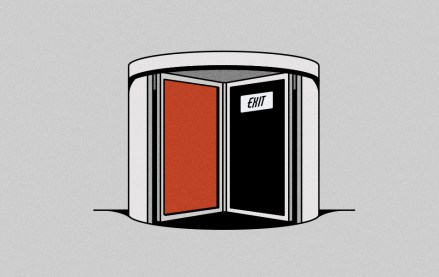As AI alters cost of creative, indie agencies review how they charge clients

As a Digiday+ member, you were able to access this article early through the Digiday+ Story Preview email. See other exclusives or manage your account.This article was provided as an exclusive preview for Digiday+ members, who were able to access it early. Check out the other features included with Digiday+ to help you stay ahead
Generative AI tools promise enormous economies of scale for small creative agency teams. Good news for independent agencies struggling to find some breathing room on the ever-squeezed bottom line — until clients begin expecting those savings to be passed along to them, that is.
Digiday spoke with seven indie agency execs in the U.S. and U.K. about how they’re navigating that problem.
In recent weeks, we’ve seen how major advertisers like Unilever, Kimberly-Clark and Yum! Brands have overhauled creative production workflows to take advantage of generative AI’s potential. Naturally, it’s been music to the ears of shareholders hungry for signs that CEOs are using AI to drive down costs.
But leaving the white heat of technology behind for a moment, consider the implications for indie agencies — the creative and production shops that until recently, would have been the first ports of call for advertisers big and small looking to launch a new campaign or refresh their e-commerce shopfront.
Generative AI’s implications for their pricing models, and the longer-term threat of clients progressively taking more and more of their creative work in-house, puts them in a pickle. According to Observatory International pitch consultant Lucinda Peniston-Baines, not all indie agencies are awake to client demand for efficiencies to show up on their receipt, despite the fact that AI capabilities have become table stakes in creative pitches.
“They see it as an internal efficiency tool for them to … regain some of that margin erosion they’ve suffered over so many years,” she said. Clients, by contrast, “are expecting [savings] now.”
How are indie creative agencies affected?
Unilever and Kimberly-Clark are, for the moment, well ahead of the crowd. The former is using generative AI tool Pencil Pro to pump out hundreds of assets across its top brands in 14 markets, a setup that took the best part of a year to put in place. Few advertisers have the cash, time and operational muscle to match systems like theirs and for now, the small and mid-sized enterprises that provide many indies with their bread and butter aren’t likely to in-house creative strategy or production en masse.
But it would hardly be surprising to see brands farther down the S&P 500 pecking order trying to follow a similar path. In the meantime, brand procurement teams increasingly expect agencies to pass along AI-enabled cost savings in the form of lower retainer or project fees, Peniston-Baines said.
“There is definitely pressure from clients to provide more for the money they’re spending,” said Jonathan Healey, group tech director at British indie IDHL. “Clients will always look for value, and rightfully so. With all the headlines about AI, there’s a clear expectation that we’re using these tools to help grow their business,” added Swapnil Patel, co-president, Attention Arc.
This isn’t just about advertisers acting miserly. CMOs are well aware of what AI can do for their brand on a creative and commercial level.
“I’ve been in meetings where clients will go: ‘ChatGPT just spit out this line.’ They’ll actually do it in the meeting. That makes it more challenging to justify your value,” said Mike Hayward, chief creative officer at indie shop Copacino Fujikado.
Adoption of AI creative tools has allowed the company to streamline budgets previously set aside for voiceover work and live shoots, and pursue creative solutions that would previously have been cost-prohibitive. According to Hayward, it’s begun relying less on other production companies and freelance talent, though the exact cost saving is unclear.
On one recent campaign for an unnamed client, the agency was required to produce video and still assets featuring 26 different models across several locations. AI tools were used instead, enabling it to produce the campaign for 26% of the cost that live shoots would have incurred.
“Those are things that we’re able to take out of the budget … that would go outside and contribute to a longer delivery time. If you get the same quality now, you’re not sacrificing,” said Hayward.
Other agencies are still restricting the use of generative AI to behind-the-scenes functions, like storyboarding and creative strategy work. “We can do it far quicker if we do it using AI, but that means you’re going to have an AI-generated product at the end of it. If the client’s comfortable with that, then obviously we’re good to proceed,” added Healey.
How could agency pricing change?
Though legal and reputational concerns still loom large, more clients are shedding their reluctance to use AI-generated final assets in campaigns — bringing queries over how an agency tots up the value of an asset that it took only a few minutes to knock out.
Hayward said Copacino Fujikado had stuck to an hourly-based billing model, but worked to pass on production savings to clients. Budgets have held steady, he said, but the agency is now providing more assets to clients without increasing its billing hours. “We now build in the efficiencies that AI provides. That means faster turnaround and lower costs, especially when we handle everything in-house. And because we always bill to actuals, clients directly benefit from those savings,” he said.
Other companies are looking to output based pricing, or a “productized” approach, as a potential solution. Indie agency Uncharted, for example, launched last year operating with a mix of output-based and performance-based pricing. The agency gets paid for the work it makes, but it gets paid more if that work contributed to a client hitting a pre-approved business goal.
“We’re not there to deliver things,” said co-founder and CEO Hattie Matthews. ”We’re there to create value and impact.”
Pricing pressure and in-housing are threats that indie shops have been dealing with for much of the last decade, and it’s worth remembering that output-based pricing systems emerged as a solution before ChatGPT’s big bang moment. Luquire, for example, began using a productized approach back in 2019 in a bid to become more competitive.
“We’ve tried to productize as much as we can,” said agency president Stephanie Spicer. Like Uncharted, it often uses a mix of performance-based and product-based arrangements with clients.
The output model’s downsides are also established, however — and some agencies remain wary. “The concern there is that you start to focus on things that are measurable, not things that are meaningful,” said Healey, who told Digiday that IDHL had considered output-based pricing, but has not used it to date.
And performance pricing might prove inferior to hours-based billings for longer-term client relationships, suggested Munir Haddad, co-founder of agency Kiosk. “We like it in concept. In execution, I have seen that clients actually end up preferring a number that is known,” he said.
Elite Media, for example, charges clients using both hourly and output-based models, depending on the length and depth of a client relationship. “It’s been case by case. The majority is still based on hourly pricing,” said Gati Curtis, president of Elite Media.
Despite softening attitudes, most of the agency execs said the off-the-shelf AI tools available to indie shops weren’t good enough to routinely create campaign assets.
“I’ll be really honest with you, the AI tools are not that good yet,” said Matthews. She pointed to a recent Uncharted film using footage made with generative AI, but edited by the agency’s staff. “Everyone’s losing their shit over them, but you have to patch together the bits that are good. It’s still a very human process.”
That likely won’t last long. We’re already a long way on from the ChatGPT of 2022, after all. Before long, indie shops are going to have to find a way to charge for their work in a way that recognizes the new costs of production, as well as the value of good judgement.
“The value isn’t just being able to do it quicker or cheaper. It’s the quality of what comes out,” said Observatory International managing partner Christine Downton.
More in Marketing

Pitch deck: How Amazon is recasting Twitch as a core part of its CTV pitch
Amazon is positioning Twitch as a defining asset in its CTV ambitions.

Netflix transforms former mall department stores into experiential venues
The location in Dallas opens this week, and one at the King of Prussia mall near Philadelphia opened last month.

Future of Marketing Briefing: AI has created a new talent paradox in programmatic agencies
The job isn’t execution anymore. AI handles that. The job is judgement.








